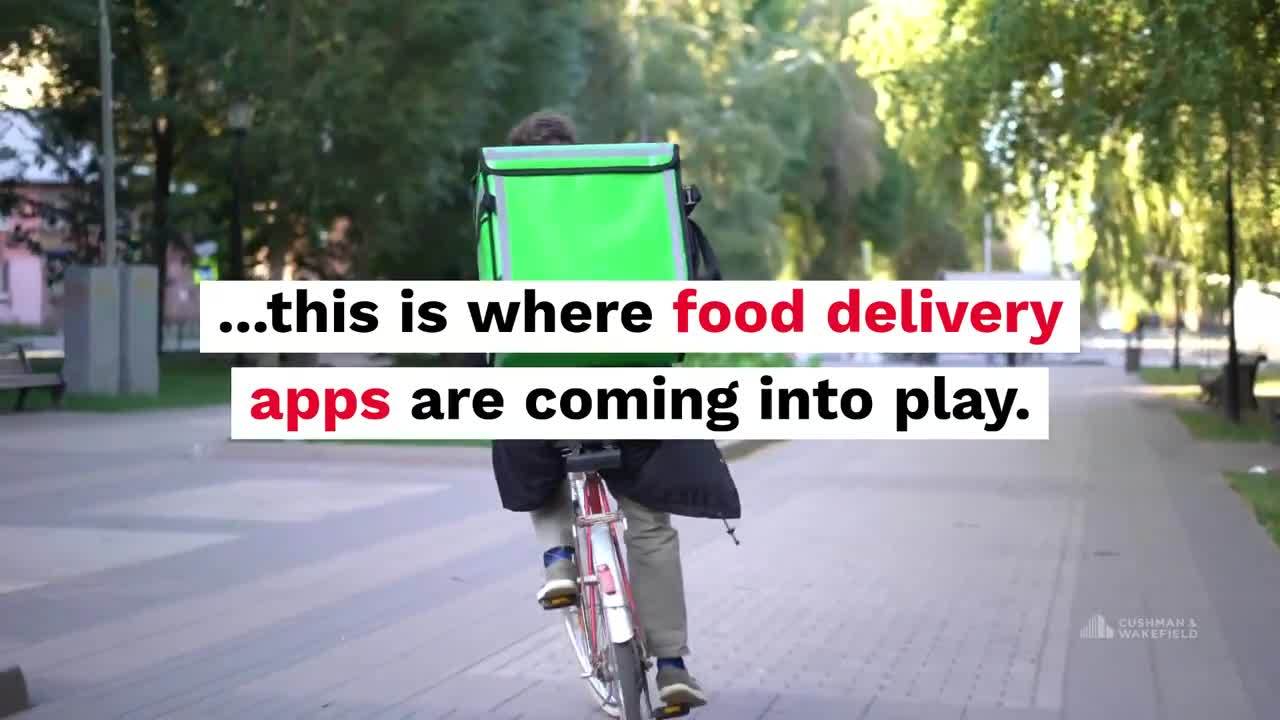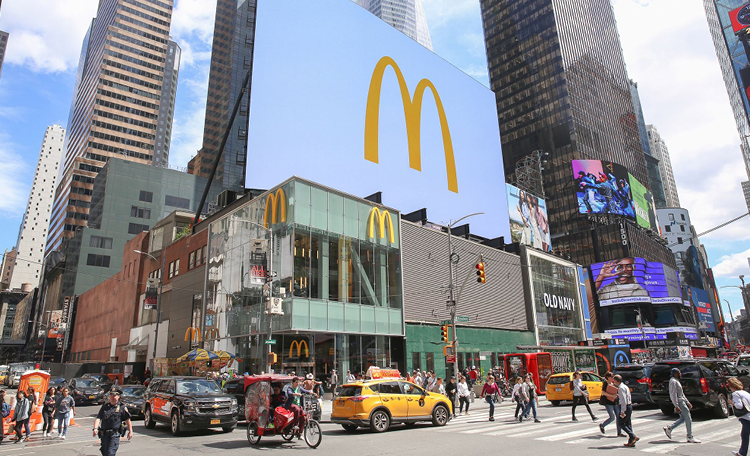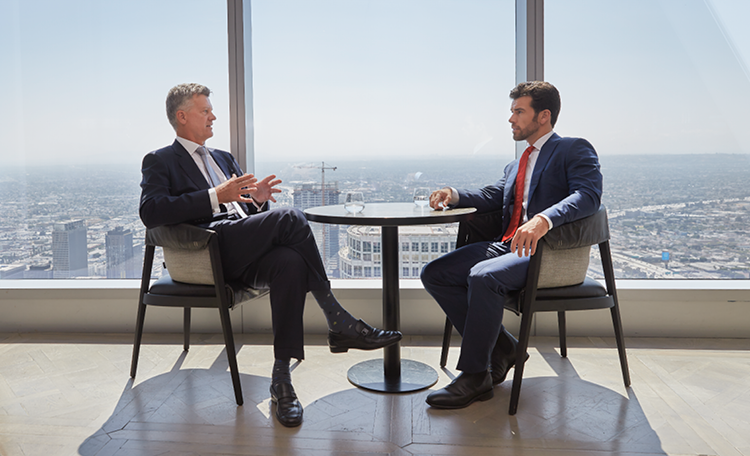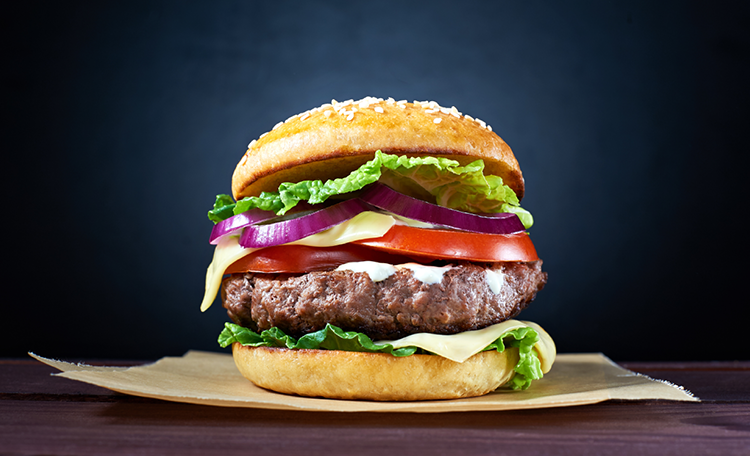
Today’s world is all about convenience – where a click of a button will get you almost anything you want delivered to your door. This is especially true when it comes to food delivery. Increasingly more customers, especially Millennials who represent a growing proportion of the consumer population, want to consume their favorite foods whenever and wherever they want.
This is where food delivery apps such as Grubhub, DoorDash, Seamless, Uber Eats, eat24 and Postmates, to name a few, are coming into play.
According to QSR Magazine, restaurant delivery sales are projected to grow at more than three times the rate of on-premises revenue through 2023 and the majority of the growth will be in digital orders, which are expected to grow at a compound annual rate of more than 22 percent through 2023. Although many restaurants still offer direct delivery, much of the rest of digital delivery orders are through third-party platforms like Grubhub, which reported 16.4 million active diners in the U.S. With statistics like this, one might think delivery apps are bringing more restaurants to more people, improving profitability in the process, but the reality is that in many instances these apps are “eating up” restaurant space as well as taking a hefty bite out of smaller restaurants’ profits.

How Delivery Apps are Eating up Restaurant (and Retail) Space
Digital ordering and delivery have been growing 300 percent faster than dine-in traffic since 2014 – and these behaviors show little sign of slowing. Since more people are opting for delivery, more landlords and restaurants – especially chains – are rethinking and redesigning their spaces as well as updating their leasing strategies and marketing approaches. Outback Steakhouse and Buffalo Wild Wings are two examples of restaurant chains looking to negotiate their leases and/or renovate their spaces to accommodate for the uptick in online orders. These changes are especially noticeable at the front of the restaurant where specific areas are designated for delivery drivers to easily come and go.
Some new restaurant owners are skipping tables and chairs altogether and just leasing kitchen space to prepare food for couriers – these are called dark kitchens, ghost kitchens or virtual restaurants because they have no dining rooms or wait staff and sell their meals through food delivery apps. Some examples include FoodCheri in France, FAT Brands in the U.S. and Eatfirst in the UK. Even more disruptive is China’s idachu.com, where chefs will come directly to your home and cook your meal – no dining space required.
How Delivery Apps are Eating up Smaller Restaurants’ Profits
The greatest disruption from delivery services has been to restaurant sectors that already had delivery as part of their model – pizza places. While not all pizza restaurants are about delivery, some count on deliveries for as much as 75 percent of their business.
That said, for virtually every other category of restaurant, the rise of delivery apps is a new channel in which to drive sales. The challenge of redesigning restaurant space for easy order pickup and creating nearby parking capabilities for delivery drivers aside, the real challenge here may be one of basic profitability. Some third-party delivery companies charge restaurants up to 30 percent for every customer order.
Considering a typical restaurant budget allocates 30 percent of its revenue to the cost of ingredients and 30 percent to the cost of labor with the remainder going towards rent, insurance, supplies and utilities, 30 percent for the delivery charge is a huge expense. In this example, the restaurant is lucky to make any profit at all.
But, it’s not only profits that the apps are eating into. It’s also the relationship with the customers. Consistency is a word that’s heard in every kitchen around the world, but when you order food through a delivery app, you have no idea who’s delivering that food. Delivery issues can include anything from drivers arriving late resulting in cold food, to drivers turning down orders unexpectedly, to drivers picking up and delivering the wrong orders.
Consumers are also Eating the Fees
In an attempt to offset some of the delivery fees, increasingly more restaurants are charging additional service fees to its customers separate from the delivery fees and/or they are offering two menus – one in-restaurant menu with normal pricing and one
delivery menu with increased pricing. The thought behind it is that customers will pay for convenience. If customers don’t want to pay the extra fees, they’ll order from somewhere else.
A Hefty Bite?
Delivery apps are in it for the long haul, so what can restaurants do to survive? How can they combat these delivery app charges? And what can they do to overcome these cultural obstacles? According to the Wall Street Journal, some of the biggest restaurant operators in the U.S. are fighting back against fees charged by delivery companies.
Since they have the scale and breadth, they along with other chains are able to negotiate lower commissions. They also have the size and resources to potentially create their own delivery capabilities should they decide to do so.
Of course, if the delivery service business follows the same pattern as other tech sectors, the large and growing field of delivery app services will likely consolidate. This has already happened to some degree; GrubHub merged with Seamless, Waitr bought Bite Squad, Delivery.com purchased Mr. Delivery and DoorDash bought Caviar. We believe there will be additional consolidation in the marketplace, which could help further reduce costs to end users.
In the meantime, with a growing number of delivery players in the market, competition is heating up. And the issue of fee structures is going to become a greater challenge – especially if restaurateurs struggle to make a profit. But in the interim, most restaurants are looking at the potential opportunity. Even if this new channel doesn’t yet meet their profitability expectations, they see the marketing potential for reaching new consumers. They hope that app users will like their food enough that they will eventually either dine-in or place an order for pick up.
Those restaurants that do choose to partner with delivery apps must achieve the following if they want to remain successful and relevant:
- Consistency: From the moment a customer places an order online to the knock on their door, a consistent process is critical to a positive experience. Inconsistent service delivery and technology issues can pose serious challenges.
- Efficient layout: Delivery drivers need designated space to easily pick up the food near the counter. Diners shouldn’t be disrupted by this layout or overall process.
- Adequate infrastructure: If your hot food is cold by the time it’s delivered, nobody is happy. Ensure the right equipment and infrastructure is available to effectively execute your deliveries.
- Seamless technology: Online ordering requires seamless back-end integration to ensure the system works with your promotions, point of sale checkout, analytics, data and more.
Whatever the restaurant decides, one thing we do know for sure. People will only continue to get more mobile and more connected through advancements in technology. The need for convenience is here to stay. When it comes to restaurants, the strongest – and most voracious – will survive.
*All currency amounts listed in USD






